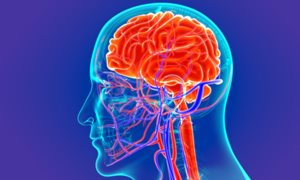
Cardiovascular disease (CVD) is the leading cause of death in women. CVD is expected to be the cause of over one-third of female deaths each year by 2030. CVD in women is still under-researched, under-recognized, under-diagnosed and under-treated compared to men. There is an urgent need to address this inequality, states the international Lancet 'Women and Cardiovascular Disease' Commission, which includes Professor Angela Maas, cardiologist at Radboud university medical center.
In this comprehensive international report on cardiovascular disease (CVD) in women, researchers call for urgent action to improve care and prevention, increase research and raise awareness to address the leading cause of death in women worldwide. Their calls to better address CVD in women align with the United Nations Sustainable Development Goals, which focus on the importance of the role of gender in health, including CVD.
The seventeen women authors come up with ten ambitious recommendations, including better educating health care providers and patients about early detection of CVD and scaling up heart health programs in densely populated regions. They also call for prioritizing gender-specific research on heart disease in women. Interventions should also be developed that accelerate women's participation in scientific research. Women are often underrepresented in these studies.
Angela Maas, Professor of Cardiology for Women at Radboud university medical center: "If we want to meet the important United Nations target, bold strategies are needed. These include not only addressing risk factors that contribute to CVD, but also more research on gender-specific biological mechanisms in women. Global and multidisciplinary collaboration for better care of women with CVD is of unprecedented importance."
Wide regional variations
In 2019, there were approximately 275 million women with cardiovascular disease worldwide. Nearly half of deaths among women are caused by inadequate blood supply to the heart (ischemic heart disease), and more than one-third are caused by stroke, in which one or more blood vessels in the brain become damaged or blocked. Geographic disparities are wide, with the highest mortality rates in Central Asia and the Middle East, North and Central Africa, Oceania, and Eastern Europe (300 deaths per 100,000 women). Higher-income regions such as Western Europe, North America, Australia and East Asia show the lowest mortality rates (130 per 100,000 women).
Risk factors for cardiovascular disease in women
As in men, high blood pressure is the biggest risk factor for CVD, followed by obesity and high cholesterol. In addition, there are specific risk factors that occur only in women: cardiovascular disease due to problem pregnancies and early menopause. It is striking that young women were not considered a risk group until now, but it is precisely among them that the number of smokers - a known risk factor - and the number of heart attacks is increasing. Also, some social or religious norms - such as restrictions on participation in sports and physical activities - may contribute to CVD in women. Socioeconomic factors, such as poverty, single mothers, unemployment, and inequality based on sociocultural status, are also equally important.
The largest increases in CVD are seen in densely populated and industrializing countries such as China (10% increase), Indonesia (7%) and India (3%). "The causes of cardiovascular disease vary by region. In densely populated regions where industrialization is now underway, the number of women with CVD increases relatively the most. Here, different interventions are needed than in countries where care is more accessible and better organized," explains Angela Maas. The comparison with the COVID pandemic clearly comes to mind, Angela Maas emphasizes the need for tailored interventions.
About the publication in The Lancet
The Lancet Women and Cardiovascular Disease Commission: reducing the global burden by 2030 - Birgit Vogel, Monica Acevedo, Yolande Appelman, C. Noel Bairey Merz, Alaide Chieffo, Gemma A. Figtree, Mayra Guerrero, Vijay Kunadian, Carolyn S.P. Lam, Angela H.E.M. Maas, Anastasia S. Mihailidou, Agnieszka Olszanecka, Jeanne E. Poole, Clara Saldarriaga, Jacqueline Saw, Liesl Zühlke, Roxana Mehran. DOI: https://doi.org/10.1016/S0140-6736(21)00684-X. The report appeared May 16 in The Lancet and was presented at the American College of Cardiology's 70th Annual Scientific Sessions.
-
Want to know more about these subjects? Click on the buttons below for more news.
More information
Pauline Dekhuijzen

wetenschaps- en persvoorlichter
Related news items

Your heart rate as a thermometer Research Olympic athletes will be followed up during 4Daagse
18 July 2022Body temperature can be determined from heart rate. This is what research by the Radboudumc among Olympic athletes shows. Athletes can use this method during training to eventually perform better in the heat. The technique is now being further investigated among participants in the 4Daagse.
go to page
AI helps the defibrillator think
4 October 2021 In the future, the AED and the defibrillator will be able to do more than they do today. Now the devices can only give patients who need to be resuscitated a shock, but in time it will be possible, with the help of artificial intelligence, to say more about the condition of the patient. go to page



